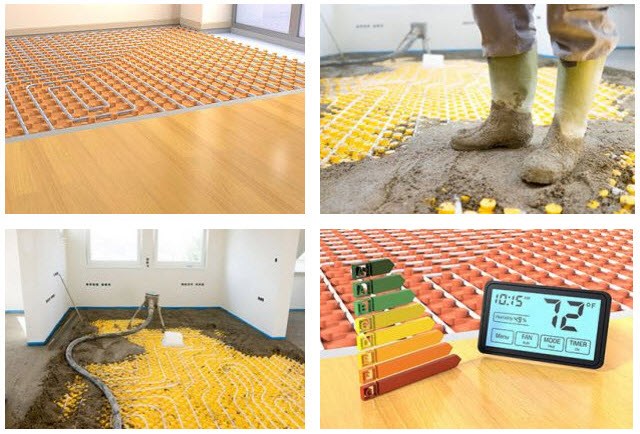How Do I Choose the Right Screed for Me?
Which is the best screed?
The screed will depend on exactly what you need.
How do you choose the right Screeding system?
There are a number of areas that you should consider when you are looking for a system. You need to know what the is dependant on your needs.
How quickly do you want to get the floor coverings bonded to the surface or laid on the surface?
It could be Tiles, Vinyl, Laminates, Engineered wood or anything that needs to go on the surface. Before doing this, you need to make sure that the screed is dry. If you try and bond too early, it will delaminate and then you have further problems.
It’s important to decide before the screed is laid just how quickly you need those floor coverings to be laid in your program. If you need it quickly, there are screeds that you can tile after a matter of hours.
We’ve got screeds that are dry from a matter of hours to months, so depending on the thickness of the screen, you could be looking at 3 months for a typical screed to dry and ready to accept the floor coverings. That being said one thing to consider, is you can put a liquid DPM on top of the screen but it would be far more cost-effective to start out with a fast drying screed in the first place.
When can you actually walk on it?
When thinking of laying screed, remember that there’s light foot traffic and then there’s full site traffic ( would always need to be protected until it is actually covered). Generally, the levelling screeds are not wearing surfaces so if they’re not protected over a period of time, they can get damaged.
We can provide products where you can walk on the screed in a matter of hours. A traditional screed may take longer depending on the on the site conditions. In terms of the temperatures, it could be around 5 days to before it is fit to accept full traffic.
It could be longer to get full site traffic, rather than light foot traffic and so it could be take up to 24 hours for certain products while it could be anything from 3 to 7 days for traditional screeds. It’s important to decide when do you need to traffic and when you need all the tradespeople on the surface of that screed working.
Loading of the best screed
This might be fixed into the screed or it might be that you’ve got to pass some plants or machinery across the screed and it needs to have a certain amount of strength to resist that load that is placed upon it.
A structural engineer will be able to tell us what load is required. We will be able to accurately provide the that will have the strength required to resist that particular load once we know your load requirement.
Will the Screed have underfloor heating?
 It may be that you look for a dense screed that’s going to give good thermal conductivity. It may be that you’ve only got a certain depth of screed that you can go to. These factors affect when deciding on the type of screed that you’re going to put in. This is the same when you want to install underfloor heating or other applications too.
It may be that you look for a dense screed that’s going to give good thermal conductivity. It may be that you’ve only got a certain depth of screed that you can go to. These factors affect when deciding on the type of screed that you’re going to put in. This is the same when you want to install underfloor heating or other applications too.
Depending whether it’s going to be bonded onto a concrete substrate or whether there’s a membrane or you have insulation, will determine the depths of screed required. Certain screeds will perform to thinner depths so if you can come up with a profile of the screed, it’s easy to find the characteristics of that screed. This way, they can match what you require.
Do you require insulation?
You need to determine what type and strength of insulation you are going to need.
- What compression strength?
- What is the thermal resistance of that insulation?
- Is it there for thermal performance or is it there for voyage fill?
If we’re trying to achieve a certain u value, we can calculate things for you to ensure that you get the correct system.
Acoustics
There is a requirement for multi-occupancy buildings to meet a certain decibel of noise which is Part L of the Building Code. It also might be that you’re in a school or even a home where you might want to install an acoustic installation. These are factors that can be considered within the package.
Membranes
If there is a requirement for a damp proof membrane. The screed might need to go on fresh concrete and will have high moisture content potentially. It can take up to 12 months of drying depending on the thickness. What you don’t want is that moisture to go into the screed and delay the drying times of the screed so membranes might be needed to suppress that moisture.
Slip Membranes
It’s best practice to place a slip membrane over insulation especially for your foil backed insulation.
These are some of the things that you may consider, but the best thing to do is to fact find and come up with a list of necessities. You may have a list of things that you’d like and then it comes down to cost. You may have a list of things that you definitely need for the project and we can design that system to tailor for your exact needs. The screed isn’t far away.

Leave A Comment